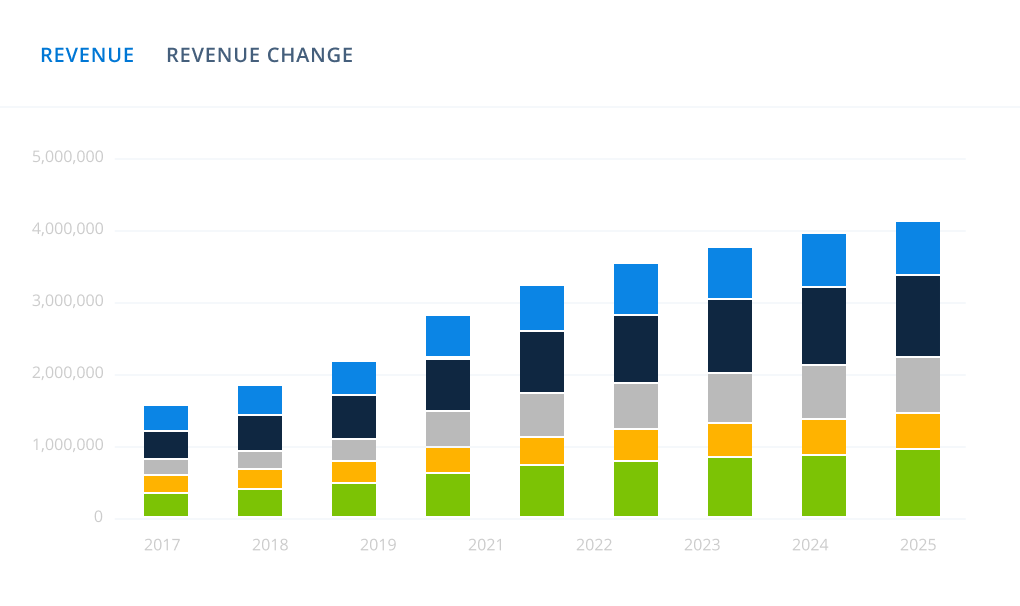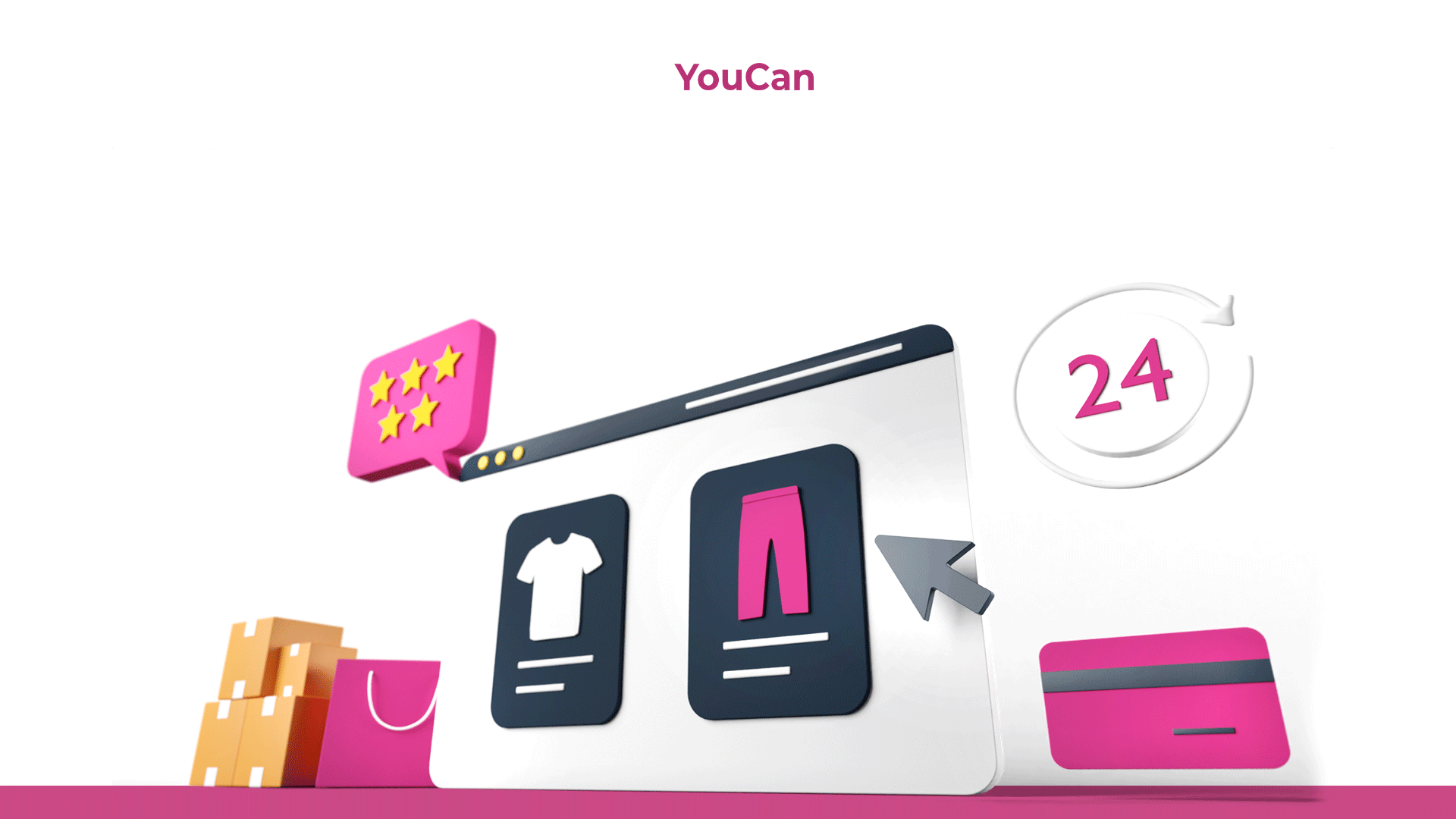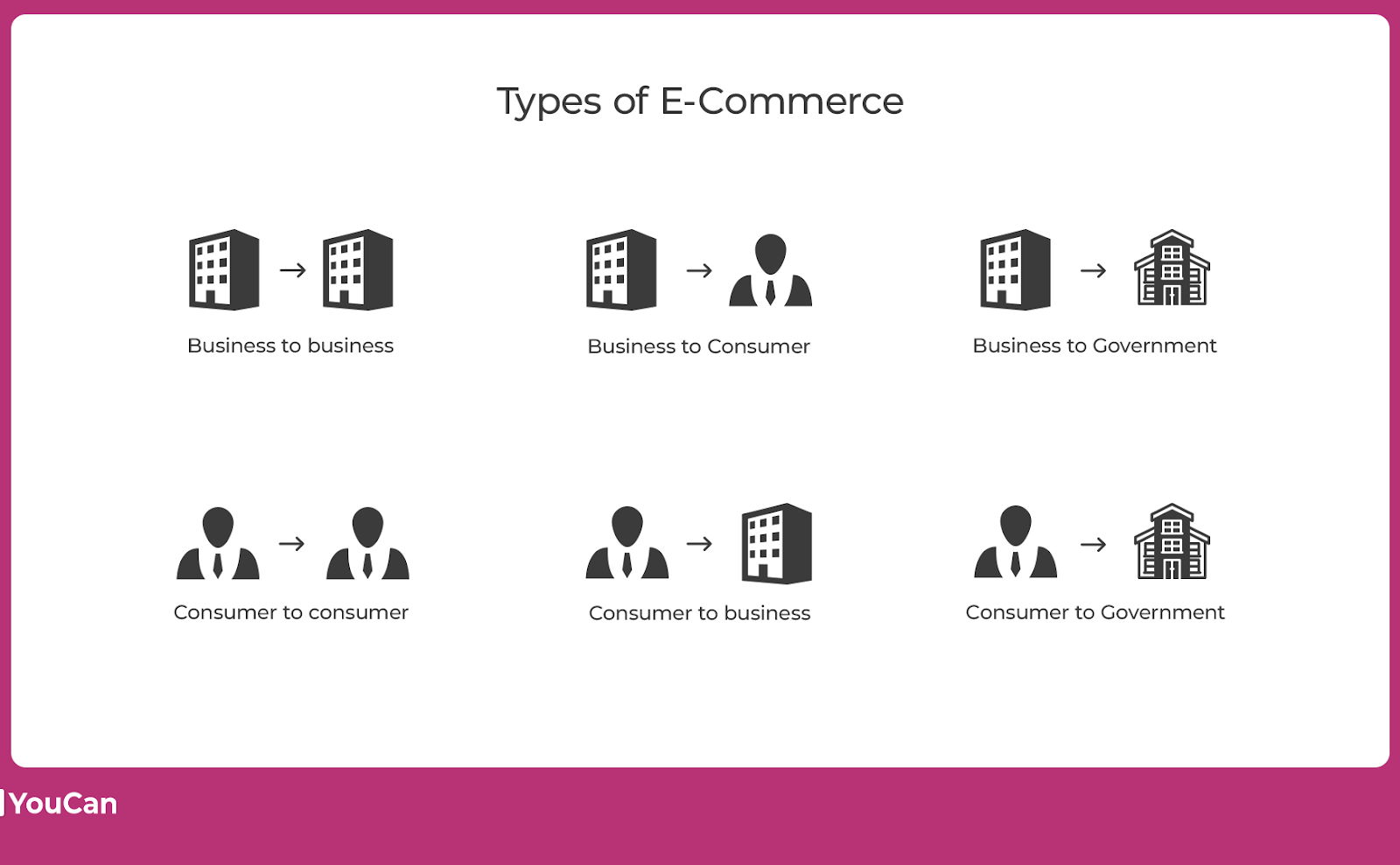In 2024, retail e-commerce sales surpassed 4.1 trillion U.S. dollars worldwide, which is only going up! Crazy right? Well, that’s how essential e-commerce is now, occupying a big part of the world economy.

Source: E-commerce worldwide - statistics & facts 2025So What is E-Commerce and why does it matter? Let's go through its benefits, the different E-Commerce models, and the different types of E-Commerce stores.
- Benefits of E-Commerce:
- Different types of E-commerce models
- Types of E-commerce stores
What is E-commerce
E-commerce plain and simple is taking your commerce activity online and selling on the internet! It includes:
- Retail and wholesale commerce
- Direct sales
- Auctions
- Advertising and marketing
- Customer service
- Electronic financial transactions between individuals or businesses
E-commerce has been around since the 70s, but it wasn't until the 90s that it really took off with the World Wide Web and online payment systems.
E-commerce activity soared with the pandemic of Covid, especially when people were confined and unable to leave their homes. People were forced to become more familiar with ordering and receiving products right to their doorstep.
Top 10 advantages of E-Commerce:

You can tell it’s due to the benefits that e-commerce encountered in the world and become as important as regular traditional commerce.
E-commerce offers several benefits which include the following:
- Fast buying process: Save time and energy by ordering online in just a few clicks—no need to visit a store physically. Plus, get detailed product information instantly.
- Detailed Product Information: Unlike normal commerce, e-commerce can provide customers with detailed and accurate information about products or services thanks to the tools that the online store makes available to them without difficulty:
Product Description: The possibility to specify the main features of the product, why it will be beneficial for the customer, and other details that make it an appealing product.
Photos and videos: Use photos and videos to describe and explain the functioning of the product in more detail. You can take high-quality photos of the product from all angles and aspects, and provide a video showing how to easily use the product.
Ratings and Reviews: Customers can leave feedback about their experience with the product, which helps other customers get a clear idea of its advantages and disadvantages. This helps to make the right decision about purchasing the product and adds more trust and credibility to the product.
- Product and price comparison: E-commerce allows customers to easily and seamlessly compare prices and products and gives customers the freedom to choose and browse a wide range of products and services.
- Global Reach: Online merchants can now easily reach a global audience without geographical boundaries, increasing sales and profits.
- Cost Efficiency: E-commerce reduces operational and administrative costs due to the absence of physical stores and additional labor, resulting in more competitive pricing and in return creating new employment opportunities in areas such as advertising design, order confirmation, shipping and delivery, and others.
- Tracking and analyzing the data: E-merchants can collect and analyze data and understand customer needs, allowing them to improve their services and products as well as their direct marketing strategies.
- Better customer service: E-commerce can improve customer service by offering online technical support options and answering customer queries quickly and at any time.
- Multiple payment options: E-commerce allows customers to choose the method that best suits their needs and payment preferences, providing more flexibility and convenience in the purchasing process and positively impacting the overall shopping experience.
- Potential 24/7 revenue: Online stores operate round the clock, without having to adhere to the specific working hours of traditional stores, increasing the merchant's chances of earning income that is not tied to a specific schedule.
- Scalability: The online store tools allow you to process a big number of orders in a smooth and efficient way, thanks to the use of various applications and options, such as tracking the inventory, linking the store to the shipping companies' system, viewing the payment status of all orders, as well as other procedures that can be implemented depending on the type of e-commerce you are practicing.
Types of E-Commerce:

For some, when they hear "e-commerce" the first thing that comes to their mind is the process of purchasing products or services offered in an online store, as well as shipping, receiving, and paying for those products or services through a specific payment method, and only that!
Although this is considered the most common form of e-commerce, it is not the only one, known as business-to-consumer (B2C) e-commerce, but there are others, which are the following:
Consumer to Consumer (C2C):
It’s basically a consumer selling products or services directly to another consumer, for example when you create an offer on an E-market to sell your second-hand clothes or furniture.
Business to Business (B2B):
It’s when both parties are in business, Producers and traditional commerce wholesalers typically operate with this type of electronic commerce.
Business-to-Consumer (B2C)
The typical type of business is when a business (seller, merchant) sells goods or services to a final consumer. It corresponds to the retail section of e-commerce, where traditional retail trade normally operates.
Government to consumer (G2C)
This type of e-commerce refers to business operations that involve the provision of government services and transactions via the Internet to citizens. These include various government services such as issuing permits, licenses and certificates, paying fees, taxes and fines, tracking the status of government applications and transactions via the Internet, as well as many other services that the government can provide to citizens in this context.
Business-to-Government (B2G):
This type of procurement includes all tenders, auctions, contracts, and other
commercial transactions occur exclusively between businesses and governments and require service providers and suppliers to meet the needs of governments.
Consumer to Business (C2B)
It’s when individuals make their services or products available for purchase for companies seeking precisely these types of services or products. Example of influencers offering their services to businesses.
Stores Types
Another classification that affects specifically the e-stores is their classification according to the quality of the products or services they provide, as follows:
- General merchandise retail stores: Online stores that sell a wide range of products and merchandise, such as fashion items, electronics, appliances, jewelry and fitness items.
- Service-based online stores: Online stores provide online services such as training and distance learning services, graphic design services, legal and financial advice, software development services, web design services, translation services, fitness services, styling services, interior design services, and many more.
- Digital Products Providers: The stores allow customers to purchase and download digital products such as games, e-books, software, mobile applications, music, movies, training courses, photographs, ready-to-use templates in various design fields, and other digital products.
It is clear that e-commerce is one of the fastest growing and developing sectors at the moment, it offers many opportunities for young people to achieve their professional and personal goals and it allows individuals to work from anywhere at any time, making it a good option for those who are looking for freelance work that allows them to change their lives for the better.
All it takes is clear steps, a long breath, and a strong will to keep going.
Start your journey now and create your online store on YouCan
Now that you understand what e-commerce is and why it matters, check out our guide: